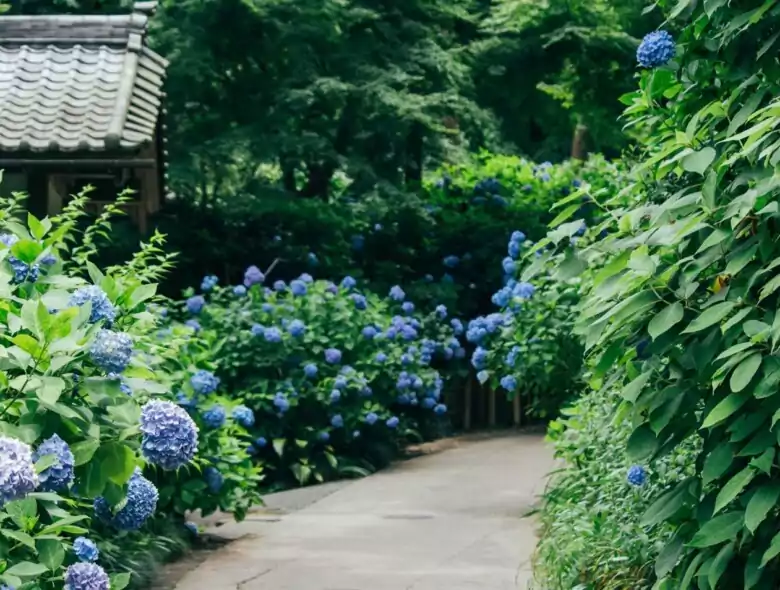Hydrangeas, known as Ajisai in Japanese, are one of the highlights of the rainy season in Japan. They usually bloom from early June to mid-July when their vibrant colors brighten up gardens, homes, and temples across the country.
Hydrangeas come in a variety of colors and species ranging from pastels to deep blues, purples, and pinks. The flowers can indicate the pH of soil; the bushes have pink flowers when the soil is alkaline and blue flowers when the soil is acidic. Japan is one of the countries with the largest variety of hydrangea species.
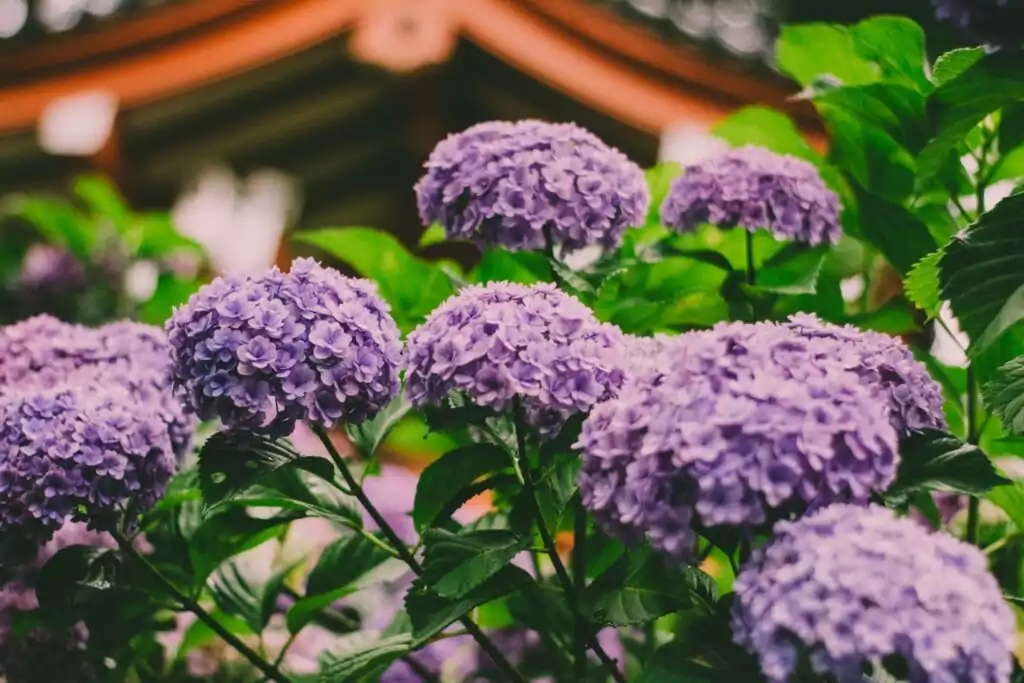
Yatadera Temple (Nara Prefecture)
Located above the town of Koriyama, Yatadera Temple is one of Kansai’s treasured spots for hydrangeas. Tucked away in the Yata hills, it is at the top of a long set of stone steps with beautiful views across Nara. With over 10,000 hydrangeas in bloom, it’s no surprise that the temple grounds attract various visitors in the rainy season. You can also find various stalls with tasty snacks.
Year-round, visitors will stop at Yatadera Temple on hikes around Yatayama. The temple is frequently referred to as the Hydrangea Temple, so the hiking trails around Yatadera are particularly popular at this time of year. If you choose to visit Nara for the hydrangeas, make sure to stop by Nara Park to say hello to the friendly deer.
Access to Yatadera Temple
The temple can be reached by bus from Kintetsu Koriyama Station, it is the final stop on the route to Yatadera.
It’s usually free entry but in hydrangea season it is 700 yen per adult.
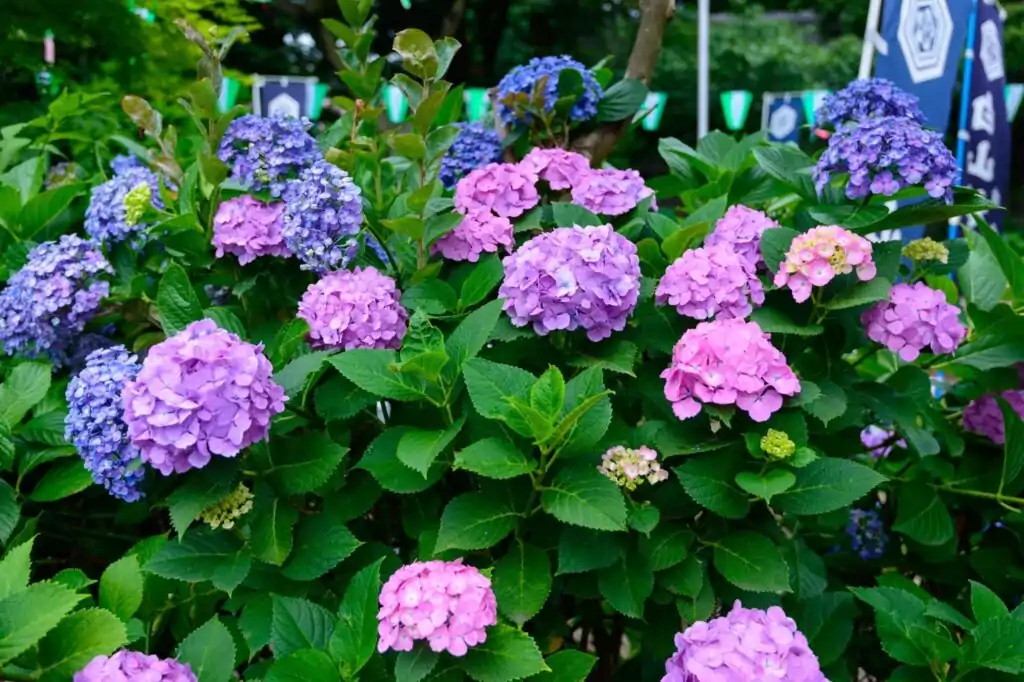
Hakusan Shrine (Tokyo Prefecture)
In the Bunkyo Ward of Tokyo, you can find Hakusan Shrine, an oasis of hydrangea blooms in the rainy season. Visitors can appreciate around 3000 hydrangea flowers at Hakusan Shrine and Hakusan Park. For over 30 years it has been a popular spot as part of the Bunkyo Hydrangea Festival. During the festival, there are various other events held as well.
Access to Hakusan Shrine
It is a 3-minute walk from Hakusan Station on the Toei Mita Lane. Alternatively, it is a 5-minute walk from Honkomagome Station on the Tokyo Metro Namboku Line.
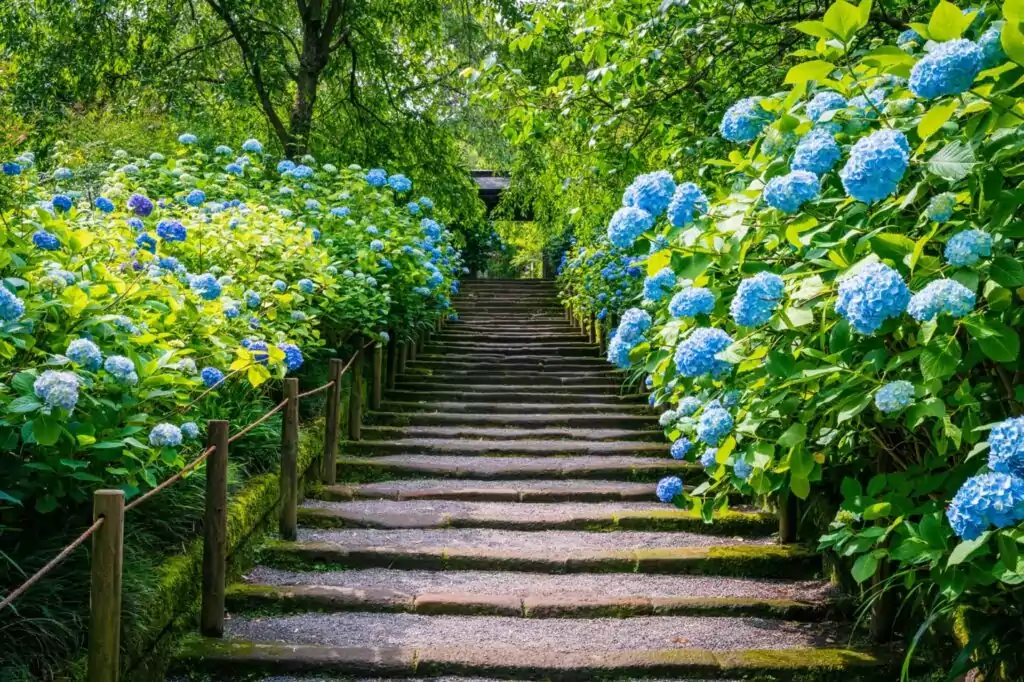
Meigetsuin Temple (Kanagawa Prefecture)
Less than an hour south of Tokyo, Kamakura is home to another temple so well known for its rainy season blooms that it is also known as the hydrangea temple.
Meigetsuin Temple was a sub-temple of the Zenkoji Temple. Visitors flock to the area when the temple grounds come alive with thousands of vivid hydrangea flowers. Meigetsuin is known in particular for blue hydrangeas, which bloom at the same time as an abundance of iris flowers.
With its proximity to Tokyo, the area can become crowded in peak times on holidays and weekends, so we recommend trying to avoid these times. However, the hydrangeas at Meigetsuin Temple make crowds worth it! With lovely beaches and hiking trails, the Great Buddha of Kamakura, and of course, the flowers, there is plenty to keep you entertained if you plan to visit the hydrangeas at Meigetsuin Temple.
Access to Meigetsuin Temple
It is a 10-minute walk from JR Kita-Kamakura Station.
The entry fee is 500 yen. (Please note that the fee might be different during June)
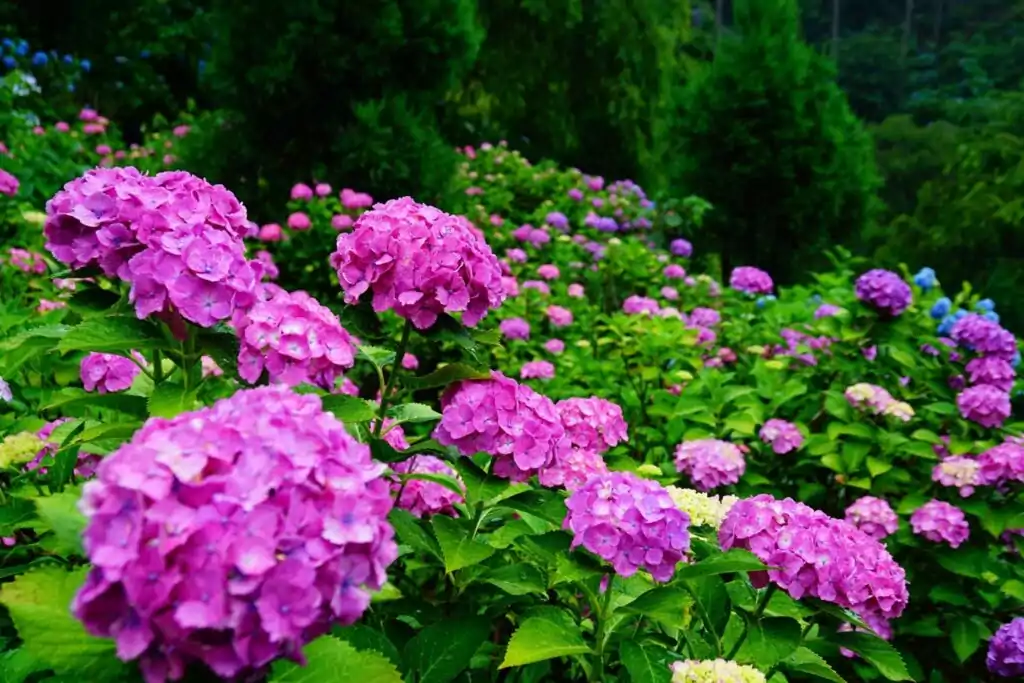
Fujinomori Shrine (Kyoto Prefecture)
Another favorite spot for hydrangea-viewing in Kansai is Fujinomori Shrine in southern Kyoto in Fushimi. The shrine plays an important part in Japanese culture since it is the origin of Children’s Day. The shrine is also a popular spot for prayers related to horseracing.
The breathtaking grounds of Fujinomori Shrine come alive with color in June when the hydrangea blooms come out. With around 3500 plants, the shrine’s Hydrangea Garden is a popular spot for viewing flowers in all colors.
While in the Fushimi area, make sure to stop by the famous Fushimi Inari Taisha Shrine!
Access to Fujinomori Shrine
It is a 5-minute walk from Fujinomori Station on the JR Line.
To enter the Hydrangea Garden, a 300-yen admission fee is required.
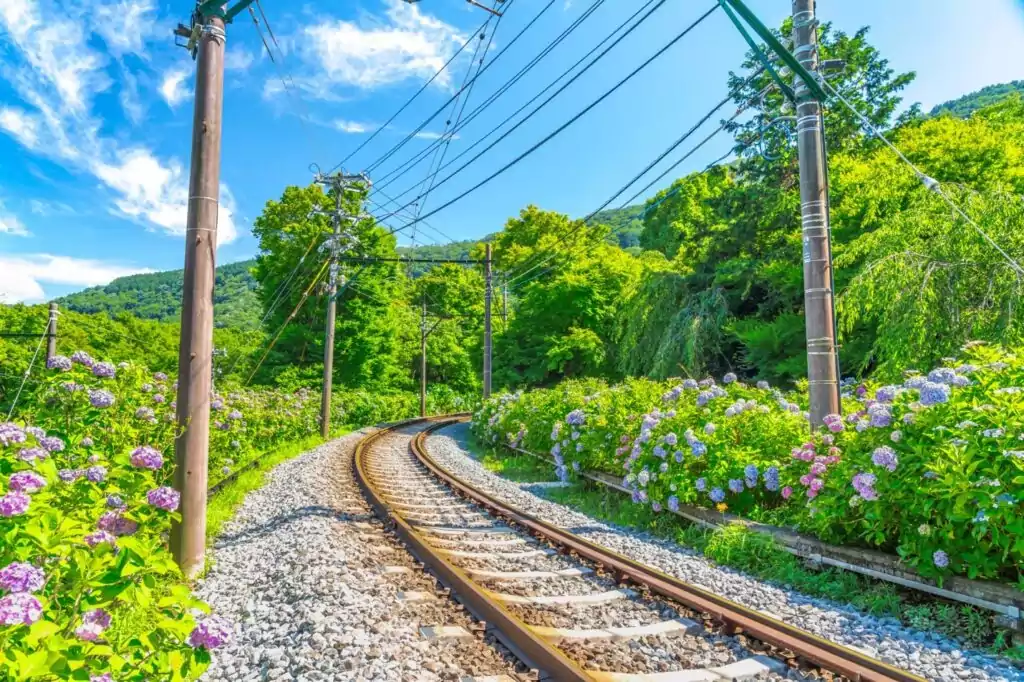
Hakone Tozan Railway (Kanagawa Prefecture)
Running from Hakone Yumoto Station to Gora Station in about 40 minutes, the Hakone Tozan Railway is scenic throughout the year. Passing through lush forests and around majestic mountains and valleys in the Fuji-Hakone-Izu National Park, it is one of the most popular attractions in the area. From Gora, you can also continue the adventure up the mountain on the Hakone Tozan Cable Car.
If you’ve seen plenty of hydrangeas at temples, you may want to change things up whilst still getting to see the beautiful blooms. The Hakone Tozan Railway provides a unique opportunity to view some stunning hydrangeas while on the go. During the rainy season, the train is known as the Hydrangea Train. Hydrangea flowers line either side of the tracks and make the train journey a very colorful one. There is also a special nighttime train during hydrangea season so that visitors can enjoy the sights of the illuminated hydrangea.
Access to Hakone Tozan Railway
Hakone Yumoto Station can be accessed from Tokyo or Odawara by the Odakyu Line.
A 1-day unlimited pass is 1580 yen.
If you consider yourself a lover of flowers, Japanese hydrangeas are not to be underestimated, so please make sure to appreciate their beauty as they’re only around for a short period each year! As well as the spots on this list, there are plenty of other beautiful spots to take in the large and vibrant flowers. Take a stroll out from your Village House apartment and it’s likely you’ll soon be able to spot some hydrangeas!
Related articles:
- 5 Japanese Spring Flowers You Need to See This Year
- Things to Do in the Rainy Season in Japan
- Top 5 Recommended Travel Destinations in Japan in June
- Where to See Tulips in Japan


